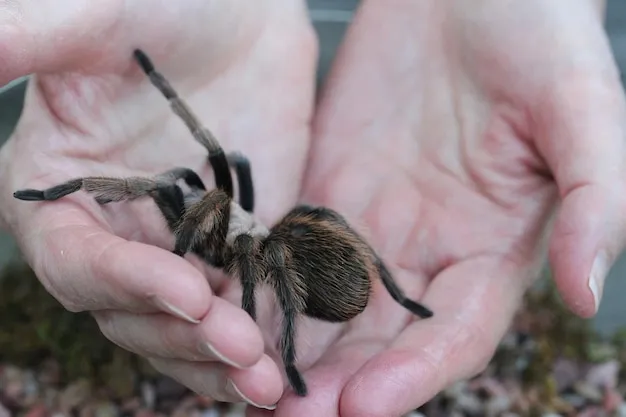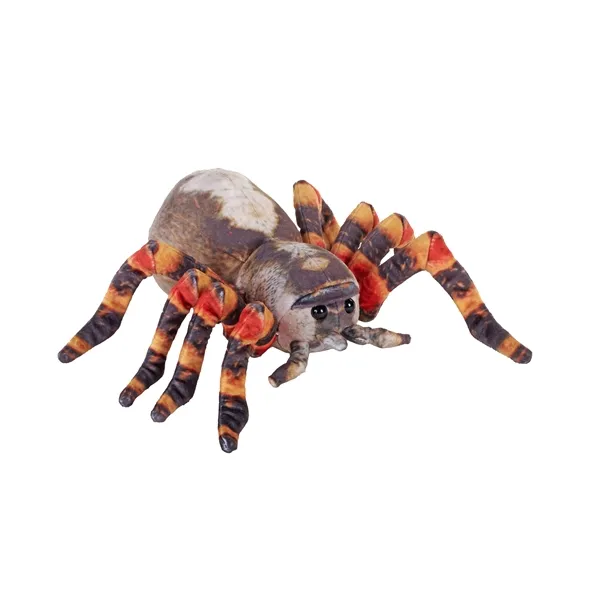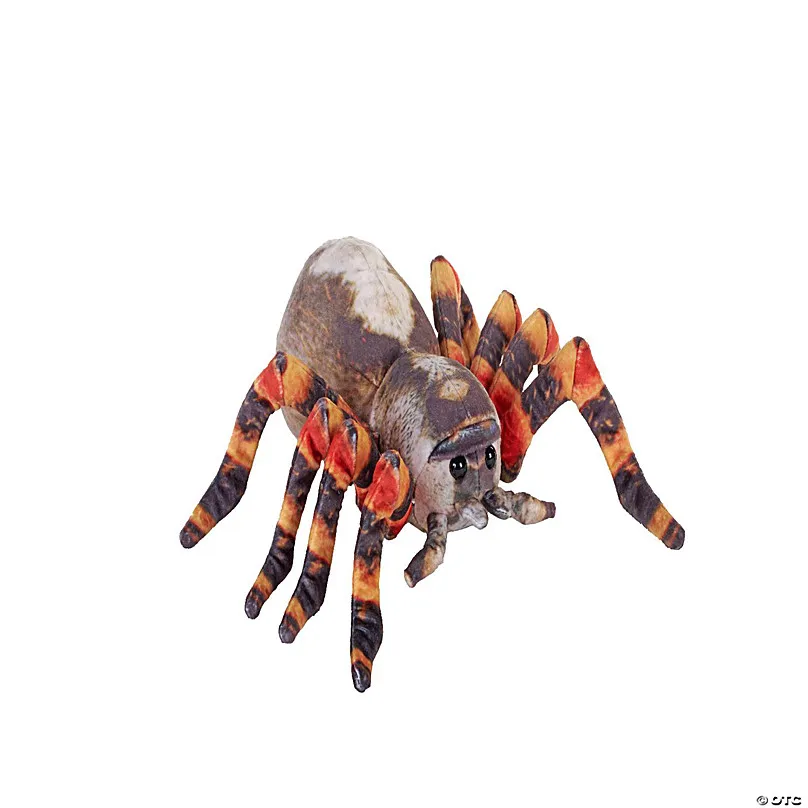What is a Tarantula?
Tarantulas are large, hairy spiders belonging to the Theraphosidae family. These impressive arachnids are known for their size, often boasting leg spans that can reach over a foot, making them some of the largest spiders in the world. They are found in various habitats around the globe, from tropical rainforests to deserts, showcasing their adaptability. Tarantulas are not typically aggressive, but they do possess venom, which they use to subdue their prey. Their diverse coloration and unique behaviors make them fascinating creatures to observe and study. The term “tarantula” is often used broadly, encompassing a variety of species with different characteristics and needs.
Key Features of Tarantulas
Tarantulas possess several key features that distinguish them. One of the most notable is their size, which varies among different species. They have eight legs, two body segments (cephalothorax and abdomen), and chelicerae (fangs) used for injecting venom. Their bodies are covered in hairs, some of which can be urticating, causing irritation if they come into contact with skin. Tarantulas also have spinnerets at the end of their abdomen, which they use to produce silk for various purposes, including constructing webs, lining burrows, and creating egg sacs. Their eyesight, although not their primary sense, is capable of detecting movement, and they rely heavily on vibration and touch to perceive their environment.
Size and Appearance

The size and appearance of tarantulas vary greatly depending on the species. Some, like the Goliath Birdeater (Theraphosa blondi), can have leg spans exceeding 12 inches, while others are much smaller. Their coloration ranges from shades of brown and black to vibrant hues of blue, orange, and red. The body is covered in a dense layer of hairs, which serve various functions, including sensory perception and defense. Some species have specialized hairs that can be flicked off as a defense mechanism, causing irritation to potential predators. The overall appearance contributes to their unique charm, making them visually striking creatures that captivate both enthusiasts and casual observers.
Habitat and Distribution of Tarantulas
Tarantulas are found in a wide range of habitats across the globe, with the highest diversity in tropical and subtropical regions. They inhabit various environments, including rainforests, deserts, grasslands, and even mountainous areas. Their distribution is influenced by factors such as climate, food availability, and suitable shelter. Different species have adapted to specific ecological niches, allowing them to thrive in diverse settings. Understanding their habitats is crucial for their conservation and for providing appropriate care in captivity. The global distribution of tarantulas highlights their resilience and adaptability as a species.
Where Do Tarantulas Live?
Tarantulas exhibit a wide range of living preferences. Some species are terrestrial, living in burrows they dig in the ground, while others are arboreal, residing in trees or other elevated locations. Terrestrial tarantulas often create elaborate burrows lined with silk to provide shelter and protection from predators and the elements. Arboreal species construct silk retreats in the branches of trees or under the bark. Some tarantulas are opportunistic and can be found in various locations, including rock crevices or under logs. Their choice of habitat reflects their specific needs and adaptations to their environment.
Tarantula Habitats

The diversity of tarantula habitats is astounding. In rainforests, they may be found in the leaf litter, under logs, or in the branches of trees. In deserts, they often inhabit burrows to escape the heat. Grasslands and savannas provide opportunities for burrowing and hunting. In captivity, tarantula habitats are carefully designed to mimic their natural environments, including appropriate substrate, temperature, humidity, and hiding places. Providing the right habitat is crucial for ensuring the health and well-being of these fascinating creatures.
Tarantula Diet and Feeding Habits
Tarantulas are primarily carnivorous and feed on a variety of insects, small vertebrates, and other invertebrates. Their diet consists of what they can catch and subdue in their environment. They are ambush predators, using their keen senses to detect prey and then pouncing with incredible speed. They inject venom to paralyze their prey before using their chelicerae to crush and consume it. The size of their prey depends on the size of the tarantula, with larger species capable of taking down small lizards, birds, or even small mammals.
What Do Tarantulas Eat?
The diet of tarantulas varies depending on their size and the environment in which they live. Common prey items include insects like crickets, mealworms, cockroaches, and beetles. Larger tarantulas may also consume small vertebrates such as lizards, mice, and even small birds. In captivity, their diet typically consists of commercially available insects and occasionally small vertebrates, supplemented with vitamins and minerals to ensure proper nutrition. The key is to provide a diverse and nutritious diet that meets their specific needs and preferences.
Feeding Frequency and Tips

Feeding frequency for tarantulas depends on their age, size, and metabolism. Young tarantulas typically require more frequent feeding, often several times a week, while adults may only need to be fed once or twice a week. Overfeeding can lead to obesity, which can be detrimental to their health. It is essential to monitor their body condition and adjust the feeding schedule accordingly. Providing fresh water is crucial. Remove any uneaten food within 24 hours to prevent mold and maintain a clean environment. Always choose prey items appropriate for the tarantula’s size to avoid stressing the animal.
Tarantula Behavior and Characteristics
Tarantulas exhibit fascinating behaviors and characteristics that contribute to their survival and adaptation. They are generally solitary creatures, except during mating season. They use various methods of communication, including vibrations, pheromones, and visual displays. Some species are known for their defensive postures, such as raising their front legs and displaying their fangs. Their behaviors also include molting, silk production, and hunting strategies. Understanding their behaviors is key to appreciating the complexity of these creatures and providing them with the necessary care in captivity.
Molting Process in Tarantulas
Molting is a crucial process for tarantulas, as it allows them to grow and replace their exoskeleton. Before molting, the tarantula will typically stop eating and may appear lethargic. It will then lie on its back, and its old exoskeleton will split open, allowing the tarantula to emerge. The new exoskeleton is soft and vulnerable until it hardens. The molting process can take several hours to a day or two, and it is crucial not to disturb the tarantula during this time. After molting, the tarantula will be more vibrant in color, and it will resume its normal activities once its exoskeleton has hardened.
Lifespan of Tarantulas

The lifespan of tarantulas varies significantly depending on the species and sex. Females typically live longer than males. Some species can live for over 20 years, while others may only live for a few years. Proper care, including appropriate habitat, diet, and environmental conditions, plays a crucial role in maximizing their lifespan. The lifespan is also influenced by factors like genetics and health. Understanding the expected lifespan of a tarantula species is important for planning long-term care and ensuring the well-being of these captivating animals.
10 Secrets You Need to Know about Tarantulas
Here are ten secrets that will give you deeper insight into the fascinating world of tarantulas. These facts cover various aspects, from their venom to their handling, habitat, and reproduction, providing a comprehensive understanding of these captivating creatures. Learning these secrets will enhance your appreciation and care for tarantulas.
Secret 1 Understanding Tarantula Venom
Tarantula venom is primarily used to subdue prey, not to kill it. The venom typically contains a mixture of enzymes and toxins that cause localized pain, muscle cramps, and temporary paralysis. The effects of a tarantula bite on humans are generally similar to a bee sting, and they are rarely life-threatening. Different tarantula species have varying levels of venom potency. While some bites can cause minor discomfort, others might not even be felt. However, it’s always best to avoid handling tarantulas to minimize the risk of being bitten.
Secret 2 Handling Tarantulas

Handling tarantulas is not generally recommended, as it can stress the animal and potentially lead to a bite. They are not naturally inclined to be handled and can be easily injured if dropped. If handling is unavoidable, it should be done with extreme caution. Use a soft brush to gently coax the tarantula onto your hand. Avoid sudden movements, and always keep the tarantula close to a surface, like a table, to prevent it from falling. Always wash your hands before and after handling a tarantula.
Secret 3 Setting Up Tarantula Enclosure
Creating the right enclosure is crucial for tarantula health. The enclosure should be appropriately sized for the species. It must include a substrate, such as coconut fiber or peat moss, to maintain humidity and allow the tarantula to burrow. Provide a water dish, a hide, and decorations such as branches or rocks. The temperature and humidity levels should be carefully monitored and maintained based on the species’ specific needs. Make sure the enclosure is escape-proof, with a secure lid.
Secret 4 The Importance of Humidity
Humidity is critical to the health and well-being of tarantulas. It affects their ability to molt properly and stay hydrated. Maintaining the right humidity level is essential for preventing dehydration and promoting healthy skin shedding. The ideal humidity range depends on the species, with some requiring higher humidity than others. Humidity can be maintained by misting the enclosure regularly, providing a water dish, and using appropriate substrate that retains moisture.
Secret 5 Tarantula Breeding

Breeding tarantulas requires careful planning and preparation. It usually involves introducing a mature male tarantula to a receptive female. The process can be risky for the male, as the female may attempt to eat him. If mating is successful, the female will lay an egg sac. Incubation and raising the spiderlings can be a complex and time-consuming process. Breeding tarantulas is best left to experienced keepers.
Secret 6 Common Tarantula Diseases
Tarantulas can be susceptible to certain diseases and health problems. These can range from parasitic infestations to fungal infections and bacterial infections. Maintaining a clean and appropriate enclosure, providing a balanced diet, and quarantining new tarantulas can help prevent these issues. Symptoms of illness include lethargy, loss of appetite, and unusual behavior. Prompt veterinary care is essential if you suspect your tarantula is sick.
Secret 7 Tarantula Species for Beginners
Some tarantula species are more suitable for beginners than others. These often include species that are known for their docile temperament, slower growth rates, and hardiness. Some popular beginner-friendly species are the Chilean rose tarantula (Grammostola rosea), the Mexican red knee (Brachypelma hamorii), and the curly hair tarantula (Tliltocatl albopilosus). Researching a species’ temperament and care requirements is important before acquiring one.
Secret 8 How to Prevent Escape
Preventing escape is essential for responsible tarantula ownership. Tarantulas are opportunistic escape artists. Always use a secure enclosure with a tight-fitting lid. Ensure the lid is properly fastened. Regularly check the enclosure for any gaps or weak points. When cleaning or maintaining the enclosure, do so in an enclosed area, such as a bathroom. Always supervise your tarantula when the lid is open.
Secret 9 The Significance of Substrate
Substrate is more than just bedding for tarantulas; it plays a vital role in their well-being. It provides a comfortable environment for burrowing, helps maintain humidity levels, and absorbs waste. The choice of substrate depends on the species, with options like coconut fiber, peat moss, and vermiculite being popular choices. The substrate should be deep enough for burrowing species and should be changed regularly to maintain cleanliness and prevent the growth of harmful bacteria.
Secret 10 The Value of Tarantula Observation
Observing tarantulas can be a rewarding experience. Watching their behavior, such as hunting, molting, and interacting with their environment, can deepen your appreciation for these fascinating creatures. Observing their habits, feeding patterns, and activity levels provides insights into their health and well-being. The more you observe your tarantula, the better you will understand its specific needs and preferences, leading to a more fulfilling experience as a keeper.
